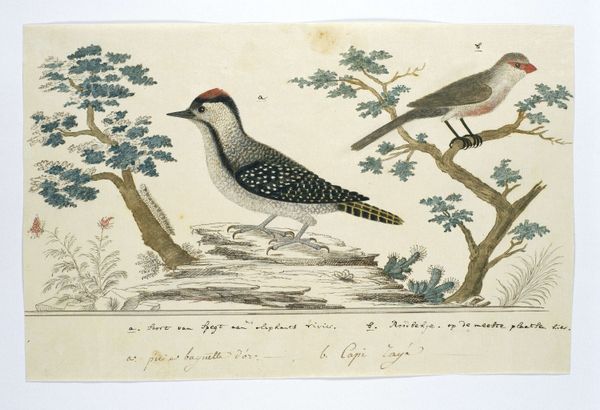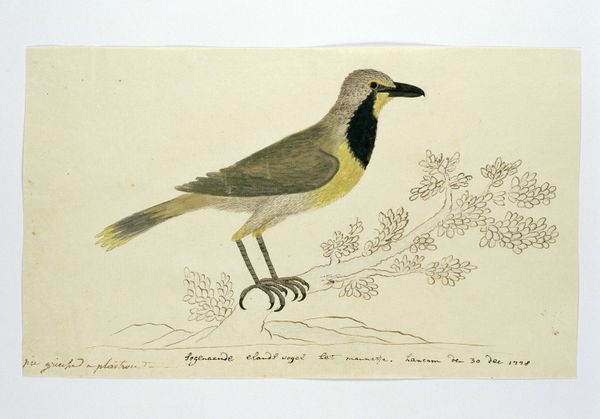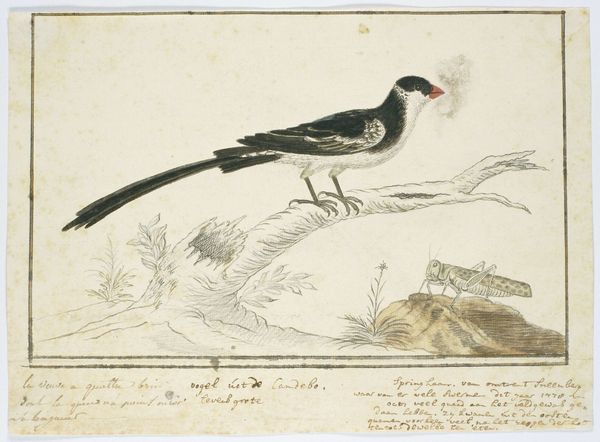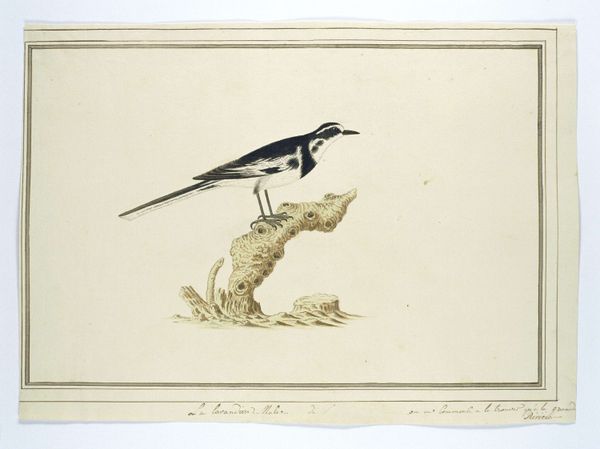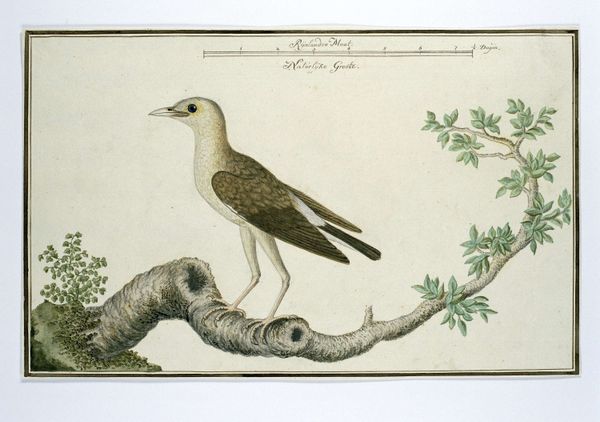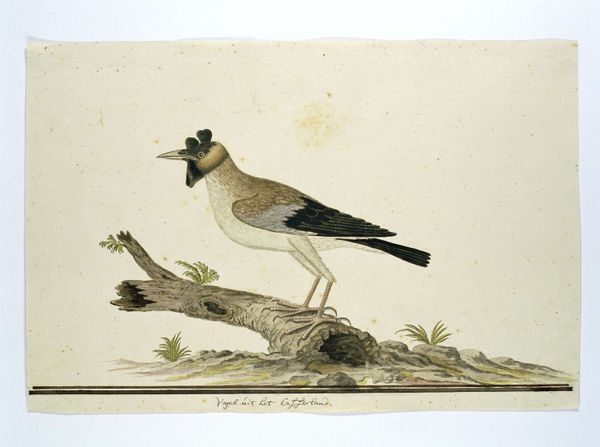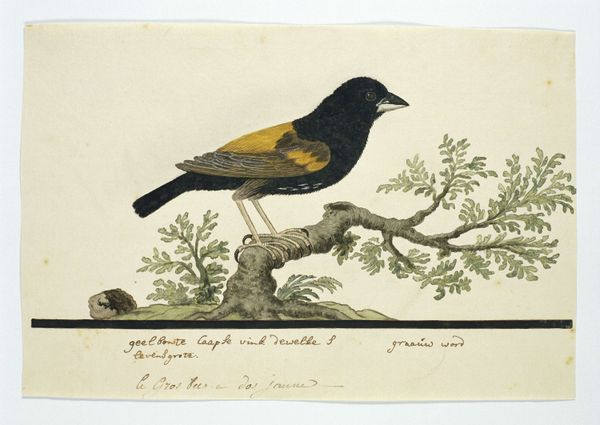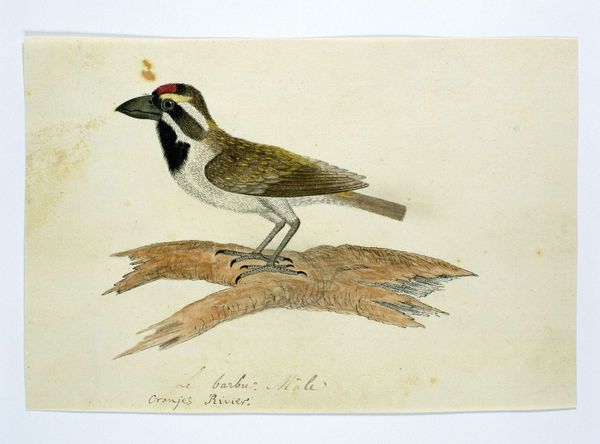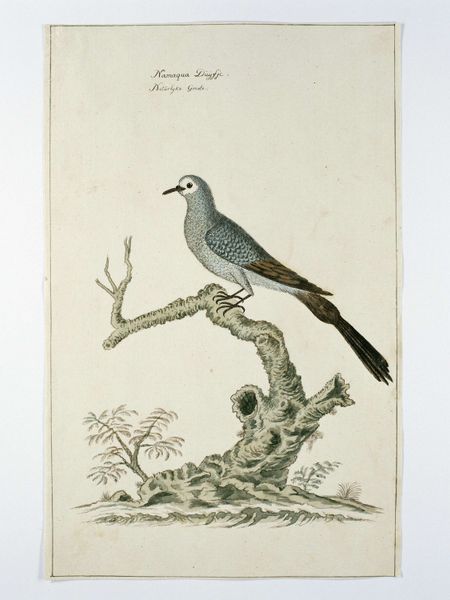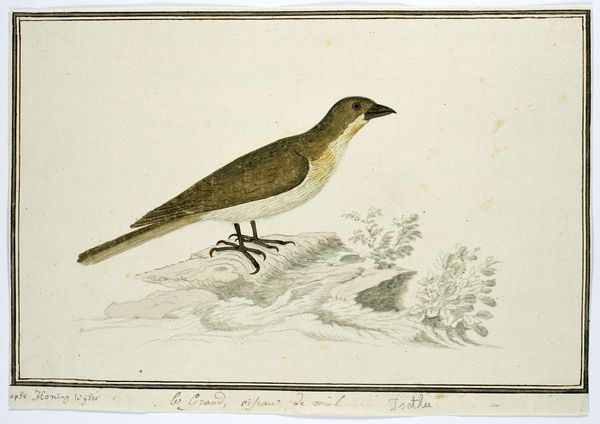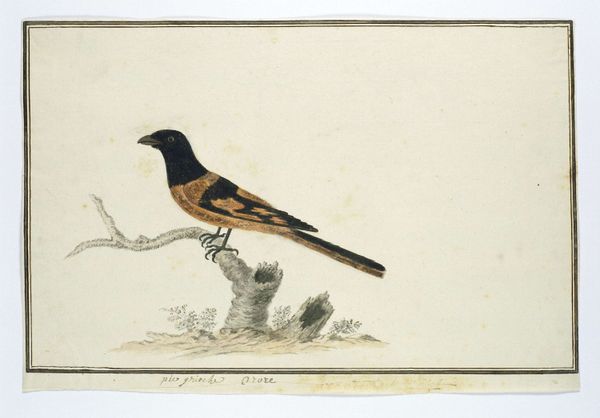
Oenanthe pileata (Capped wheatear or Hoëveldskaapwagter in Afrikaans) Possibly 1778
0:00
0:00
Dimensions: height 660 mm, width 480 mm, height 194 mm, width 316 mm, height 148 mm, width 316 mm
Copyright: Rijks Museum: Open Domain
Editor: We're looking at a drawing titled "Oenanthe pileata," or Capped Wheatear, possibly from 1778, by Robert Jacob Gordon. It's watercolor and ink on paper. It feels like a very scientific illustration, almost like a page from a field guide. What's striking to you about this piece? Curator: What I find fascinating is understanding this piece as a product of its time. Think about the role of exploration and colonization in the late 18th century. Gordon was a military commander in the Dutch East India Company. These detailed drawings weren’t just about documenting the natural world. They were instruments of colonial knowledge, defining and classifying the resources and inhabitants of the Cape. Who has the authority to name and categorize the natural world, and what purpose does that serve? Editor: So, the seemingly objective illustration has a hidden agenda? Curator: Exactly. The "objectivity" itself is a constructed viewpoint. Consider the inscription beneath the bird – that adds another layer, connecting the image to language and ownership. And it highlights a social relationship. Who were the “sheep watchers” who knew this bird? Whose knowledge is being validated and whose is being erased in this process of documentation? Editor: That reframes my entire understanding of the image. It’s more than just a pretty bird; it’s a document with complex historical and political implications. Curator: Precisely. Thinking about art within its historical context allows us to understand how power and knowledge are intertwined and reflected in these seemingly straightforward images. It makes you wonder who gets to write the story of the land and its inhabitants. Editor: This really makes me think about the role of museums in perpetuating some of these power dynamics, too. I’ve got a lot to think about now!
Comments
No comments
Be the first to comment and join the conversation on the ultimate creative platform.
